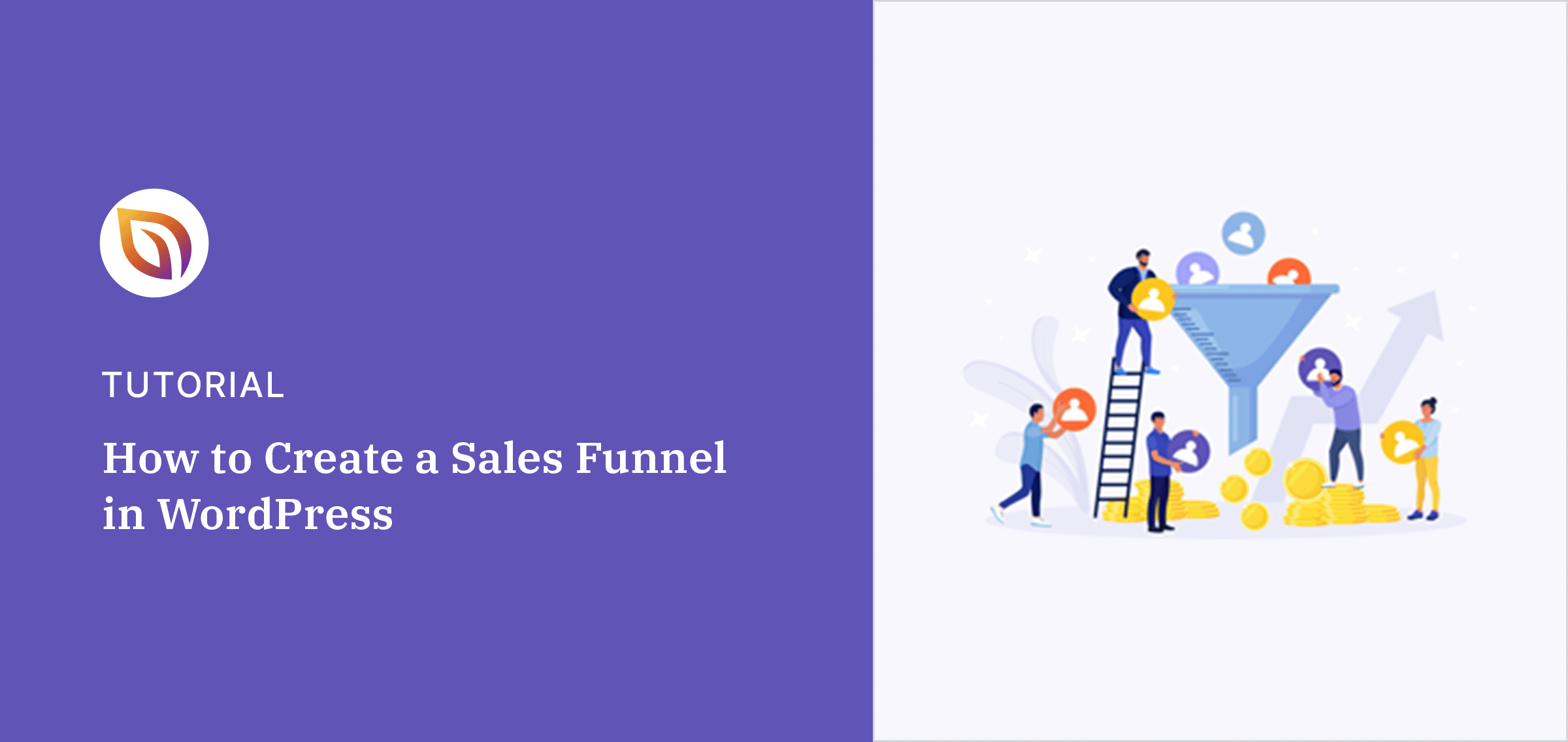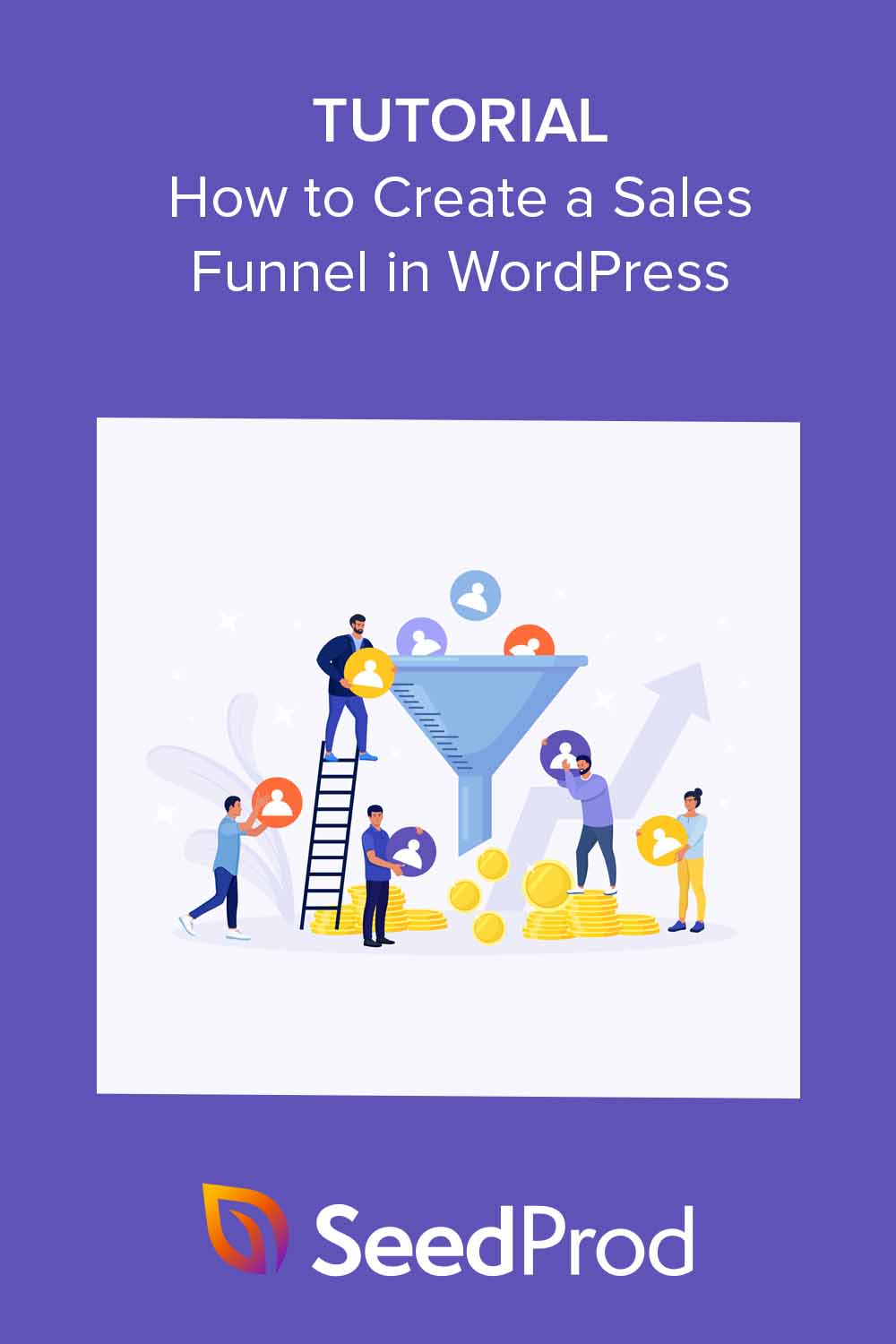Running a small business website can feel overwhelming. You’re putting in countless hours trying to get more visitors to your website. But watching those visitors leave without buying anything is frustrating.
I know exactly how you feel. I’ve been there myself, staring at my website analytics, wondering why my traffic wasn’t converting into sales.
Sales funnels seemed like the perfect solution to guide visitors toward making a purchase. But when I first tried to build one in WordPress, I felt lost. There were too many plugin options. The advice I found online was confusing. And I worried about making my website look too pushy with sales messages.
Through careful testing, I found a better way to create WordPress sales funnels. The process took time to perfect, but the results were worth it.
Today, I’ll show you the exact steps to build a sales funnel that converts visitors into customers. You’ll learn how to do this without making your website feel overly promotional.
How to Create a Sales Funnel in WordPress:
What Is a Sales Funnel?
A sales funnel is the path a person takes from first discovering your business to becoming a paying customer. Most marketers break this journey into stages that follow how people make buying decisions, from realizing they have a problem to actively looking for a solution.
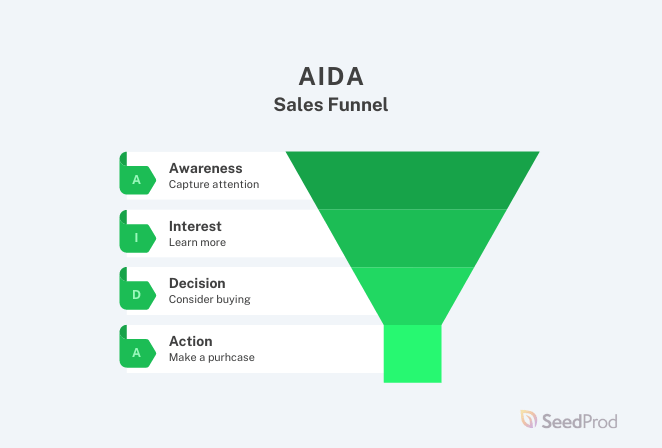
For WordPress websites, your sales funnel includes all the pages visitors see before buying something. This could be your blog posts, landing pages, product pages, and checkout process.
If you have a WordPress website where you sell products or services, you already have a sales funnel, even if you didn’t create it intentionally. Every page that leads to a purchase is part of your funnel.
Your funnel might have several steps. For example, someone might:
- Find your blog post through Google
- Click to read more about your service
- Sign up for your free guide
- Get your email follow-ups
- Finally decide to buy
The good news is you can improve each of these steps. You can make pages easier to use, remove things that distract visitors, and encourage more people to buy.
Best of all, you can track how well your funnel works. This lets you test different approaches and make smart choices based on real data about what your visitors do.
Now that you understand what a sales funnel is, let’s look at how to create one in WordPress.
How to Create a Sales Funnel in WordPress
With the essentials in place, let’s look at the steps to create a sales funnel that turns casual visitors into committed buyers.
1. Create a Sales Funnel Landing Page in WordPress
Most sales funnels begin with users visiting a landing page on your website. Imagine this as the entrance to your sales process, catching attention like a store’s display window.
According to Trellis, 68% of businesses use landing pages to generate new sales leads for future conversions. With a clear interface, targeted message, and no distractions, landing pages are an ideal way to get potential customers into your funnel.
I recommend using a reliable WordPress page builder like SeedProd to create one.
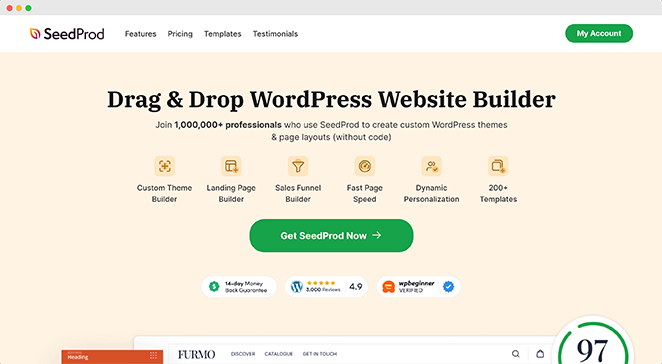
It’s user-friendly with a drag-and-drop interface, so no coding skills are needed.
SeedProd has hundreds of pre-made templates that are already optimized to increase conversions. Its drag-and-drop editor makes it easy to customize any page to meet your needs.
You can easily add elements, including countdown timers, opt-in forms, call-to-action buttons, and testimonials by pointing and clicking.
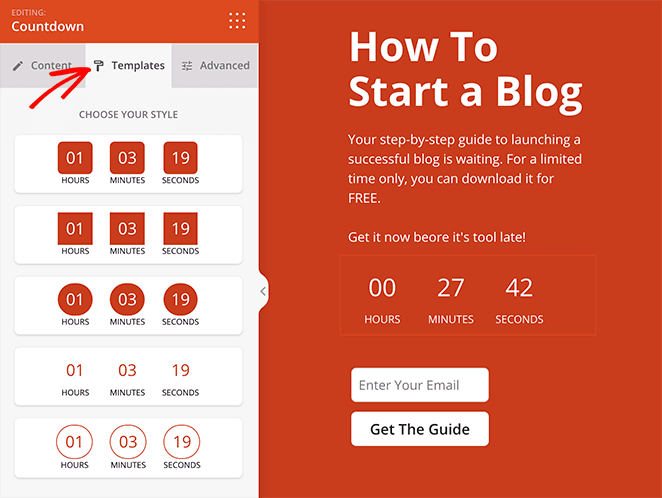
For help getting started, you can see our tutorial on how to create a sales funnel landing page in WordPress.
2. Build a Lead Generation Form in WordPress
One thing to consider adding to your landing page is a lead generation form. Since many people will leave your site before purchasing, adding one lets you capture their contact details.
Once you have a prospect’s email address or telephone number, your sales team can follow up with targeted email campaigns and offers that persuade them to buy when they feel ready.
One of the easiest ways to add a lead gen form to WordPress is with a form builder plugin. My favorite plugin is WPForms because it’s beginner-friendly and takes minutes to set up.
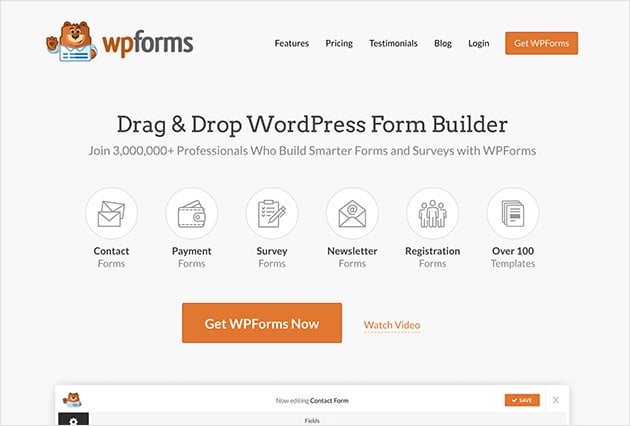
With WPForms, you can use its drag-and-drop form builder to create virtually any form in WordPress. It works seamlessly with popular email marketing tools to connect your email list and has many templates to get you up and running.
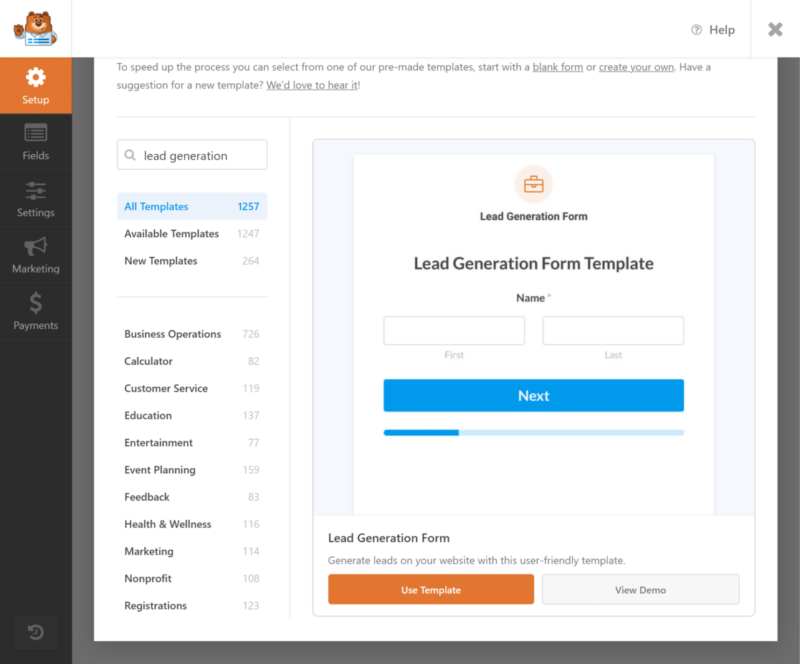
WPForms even has its own SeedProd block, so you can easily add any form to your landing page with a few clicks.
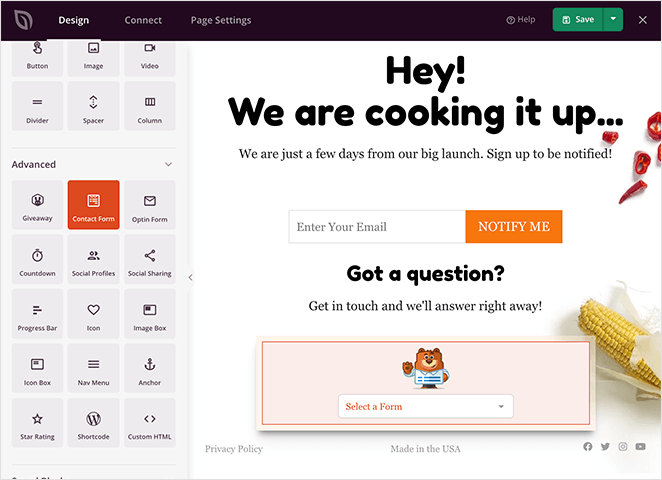
3. Add Opt-in Popups to Boost Conversions
Your landing page and lead generation form are great for generating sales. However, some users may follow a path that leads them away from your sales funnel.
This is where opt-in forms, especially popups, can help. They help re-capture users’ attention and focus them back on your funnel with an attractive incentive, such as a free download, coupon code, discount, or another offer.
Creating opt-in forms in WordPress is a breeze with OptinMonster. It’s one of the best lead generation tools and one I use here on our website.
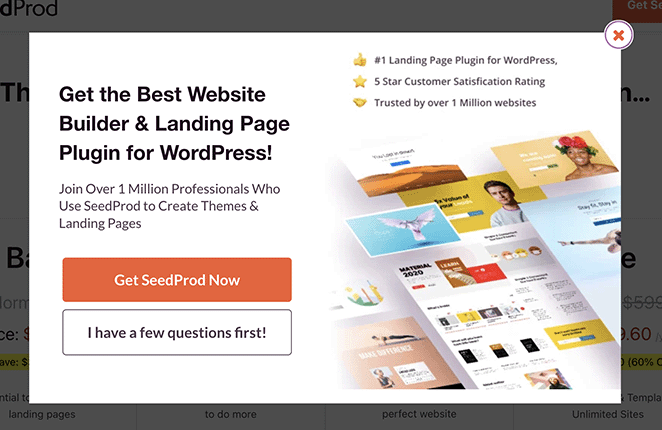
OptinMonster helps you convert site visitors into paying customers with eye-catching lightbox popups, sticky banners, countdown timers, and more. With pre-made templates and an easy drag-and-drop editor, you can build opt-in campaigns without writing code.
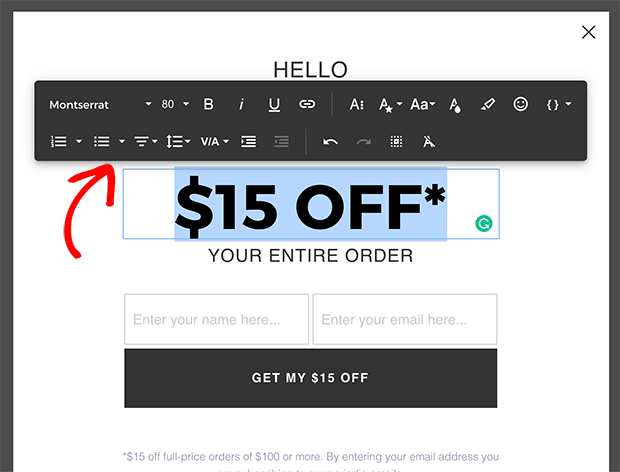
What I particularly love are its targeting rules. They let you personalize your opt-ins and show them at the right time in a buyer’s journey.
For example, you could show users an opt-in form with free shipping in a specific location.
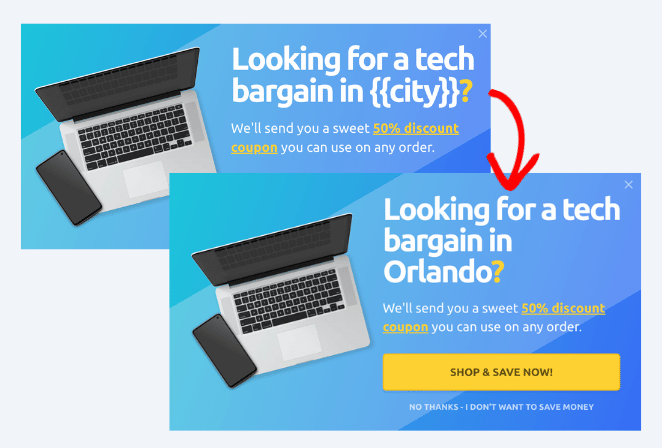
Or, if someone is about to leave your site without purchasing, you can show an exit popup with a discount for checking out.
4. Upsell Your WooCommerce Products
Now, let’s talk about upselling, a sales technique that encourages customers to buy more expensive items, upgrades, or add-ons.
Some examples of this could be prompting shoppers to get the premium version of a product, an extension on their warranty, or a luxury add-on for an item they’re purchasing.
The idea is to increase the value of a customer’s purchase, boosting sales while also providing additional value.
When users add items to their cart, they typically see a screen like this:
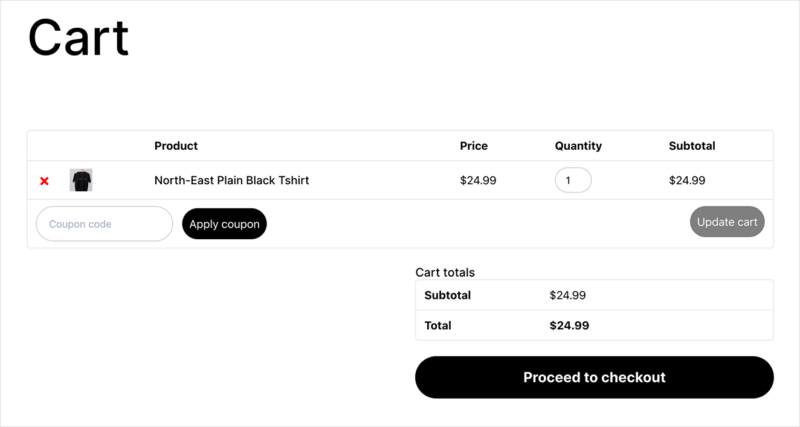
But a good sales funnel will upsell products before shoppers even reach that page. For example, with SeedProd’s Upsell block, you can upsell right on the WooCommerce product page.
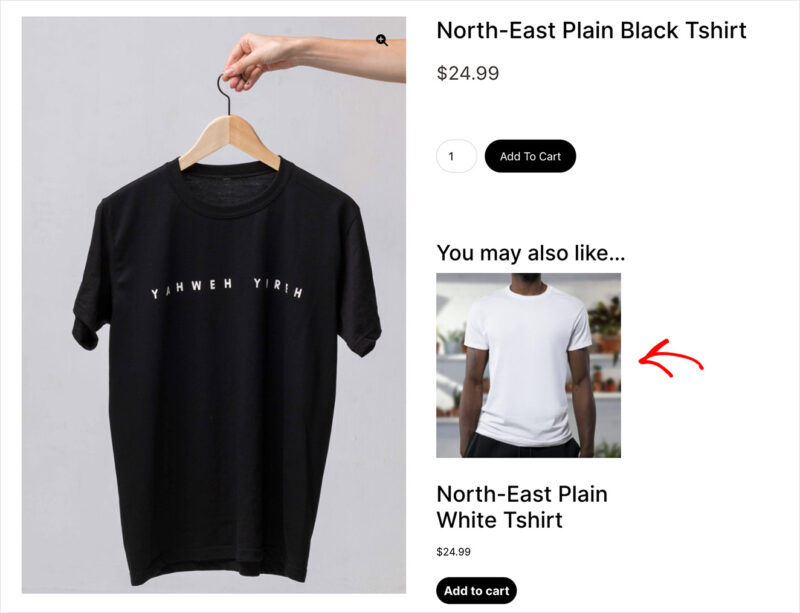
You can also use a sales funnel builder like FunnelKit. With this tool, you can build complete sales funnels or add additional steps to an existing funnel.
With its One-click Upsells feature, users can add products to their shopping cart on their way to the checkout page. It even allows for one-click order bumps in the checkout to increase conversions.
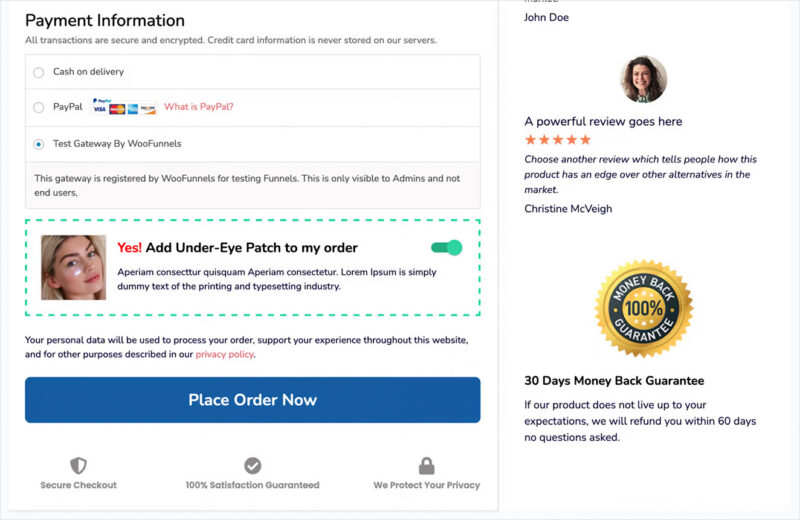
5. Make a User-Friendly Checkout Page
Once users are warmed up and ready to purchase, you’ll need a checkout page that makes closing the sale effortless. If the checkout process is too confusing or has too many steps, users may abandon their carts and never return.
In research from the Baymard Institute, 18% of customers abandoned their carts because the checkout process was too long or complicated. A further 25% were put off because the site wanted them to create an account.
To avoid this, remove any possible stumbling blocks or distractions. Make the process seamless by including clear pricing, multiple payment methods, and straightforward terms and conditions.
You can even allow users to checkout as a guest to avoid having to register for an account.
The good news is that you can build a custom checkout page using the same software as your landing page: SeedProd. With its WooCommerce integration, creating a seamless checkout process without writing code takes minutes.
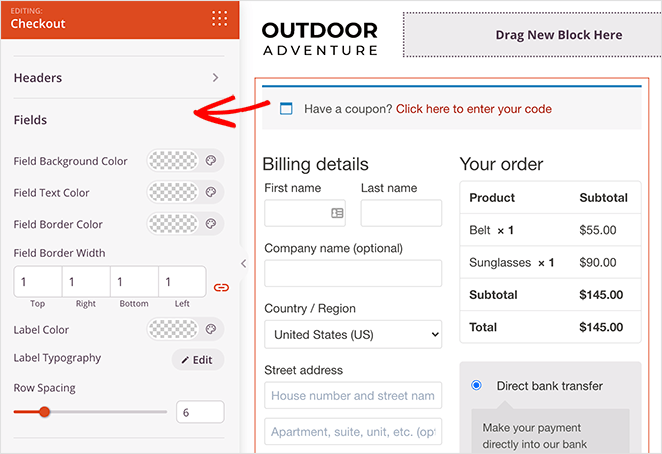
You can add eCommerce elements like product grids, sale products, add-to-cart buttons, and more.
You’re also not limited to WooCommerce as an eCommerce platform. With direct Easy Digital Downloads integration, you can tailor your checkout page to selling digital goods and services.
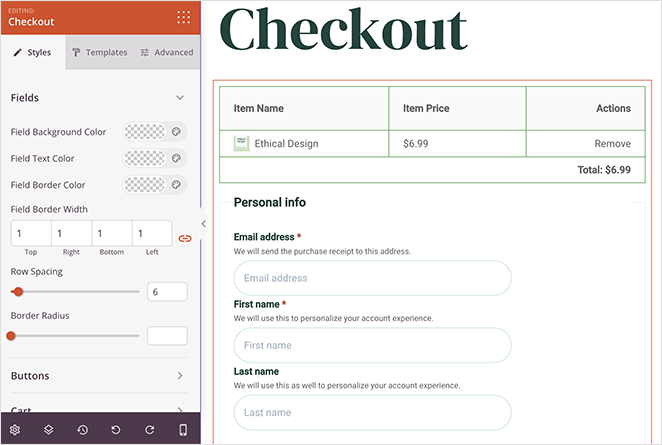
6. Build a Thank You Page in WordPress
Let’s move to a crucial part of your sales funnel – the thank you page. This is where you thank customers for buying or signing up for your service. It’s an essential part of the customer journey and critical for building relationships and increasing lifetime value.
A well-designed thank you page can add a personal touch and leave a positive impression on new customers. You can use this page to show your appreciation and even suggest related products or offers.
SeedProd has several high-quality templates you can use for your thank you page. The ‘eCommerce thank you page,’ is an excellent choice for its recommended products section.
Or you can build a thank you page from scratch, which is what I did in this example:
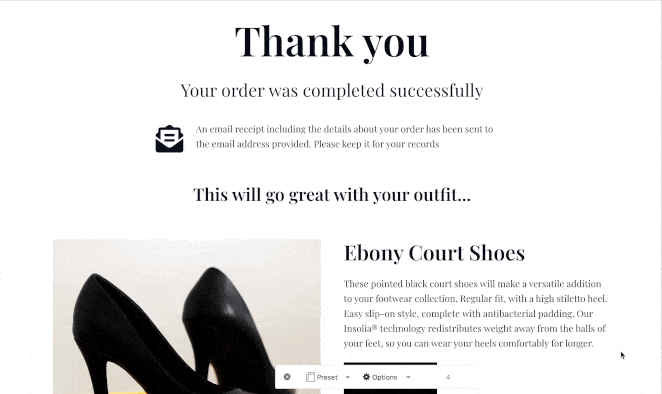
I included the following elements on my page:
- Thank you message telling users to check their email for a confirmation
- Cross-sell suggesting an additional product
- Countdown timer for sale products that are ending soon
- Popular products that other shoppers are buying
You can follow this guide on how to make a custom WooCommerce thank you page to make one just like it.
7. Track Your Sales Funnel Results
After building your sales funnel and optimizing it for the best results, you’ll want to keep tabs on its performance.
How are users interacting with your funnel? Are there any key places where they abandon your site without making a purchase?
To answer these questions, ensure you have analytics set up correctly on your WordPress site. Google Analytics is the most popular option because it’s free and has a wealth of data.
However, you can make understanding this data even easier with MonsterInsights, one of the best Google Analytics plugins for WordPress.
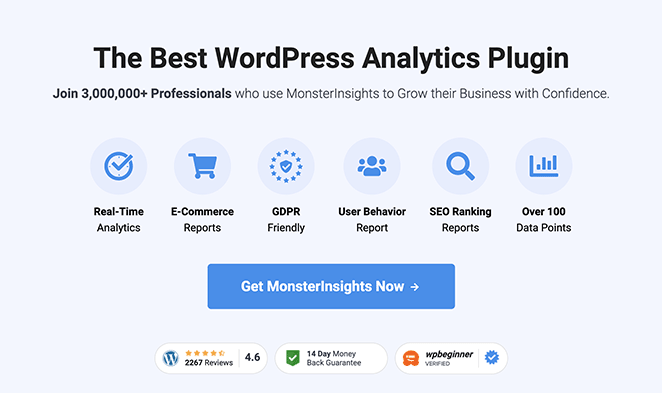
It takes complex analytics data from Google and displays it in your WordPress dashboard in easy-to-understand reports.
You can use MonsterInsights to track conversions across your site and its eCommerce addon to understand conversion rates, transactions, revenue, and average order values.
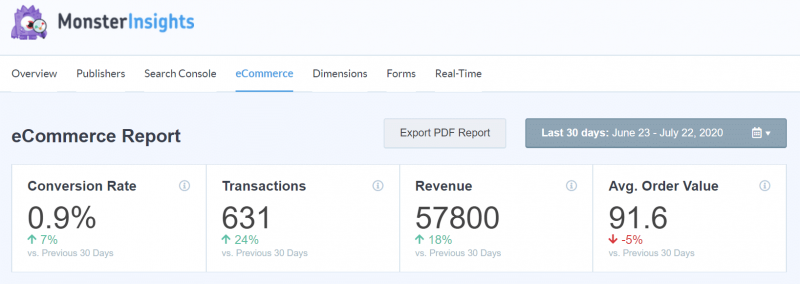
For help with this, you can see our guide on how to set up WooCommerce conversion tracking.
Types of Funnels You Can Create in WordPress
In WordPress, you can create many types of funnels based on what you want to achieve. I’ve already shown you how to create a sales funnel, but here are some other types of funnels you can build on WordPress.
1. Lead Generation Funnel
A lead generation funnel is made to collect contact details, like email addresses, from visitors. It usually starts with a lead generation landing page offering something valuable for free, like an eBook, a checklist, or access to a webinar.
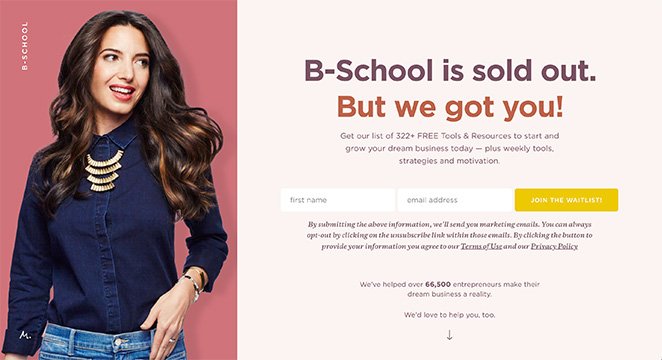
To get this free resource, visitors fill out a form with their email. Plugins like SeedProd or OptinMonster can help you create these forms and connect them to email tools like Mailchimp.
This type of funnel is great for bloggers and businesses who want to grow their audience and build relationships with potential customers.
2. Membership Funnel
A membership funnel encourages people to pay for access to exclusive content or features. It starts with a membership landing page where users can sign up for a membership.
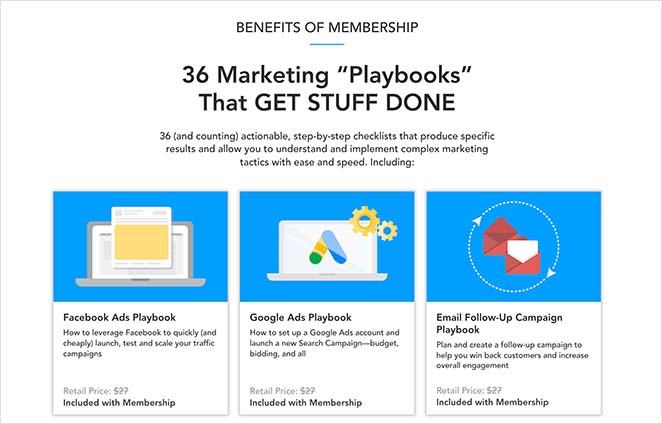
Tools like MemberPress or Restrict Content Pro can help you create a membership site and manage payments. After someone joins, you can send them emails to welcome them and explain how to get the most out of their membership.
Membership funnels work well for online communities, learning websites, or subscription-based businesses.
3. Webinar Funnel
A webinar funnel helps you get people to sign up for and attend an online event. It starts with a webinar landing page where users can register for the webinar.
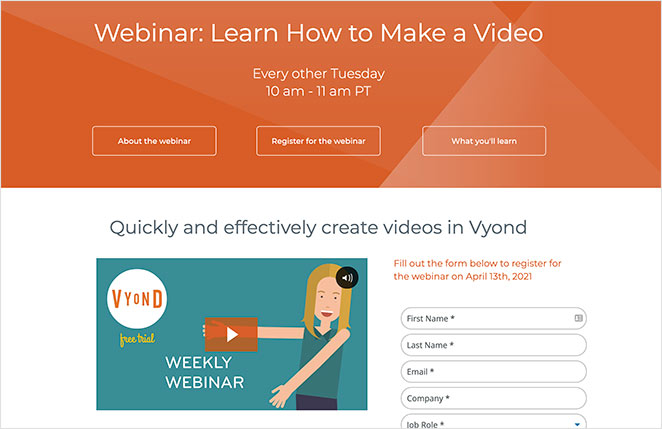
Adding a countdown timer can make the event feel more urgent and encourage people to sign up. After they register, send reminder emails to keep them excited.
You can use tools like Zoom or WebinarPress to host the webinar. After the event, follow up with an email to share a replay or an offer.
This type of funnel is great for coaches, consultants, and anyone using webinars to connect with their audience.
4. Free Trial or Product Demo Funnel
A free trial funnel is designed to let people try your product or service for free. It starts with a free trial landing page explaining what they’ll get and why it’s valuable.
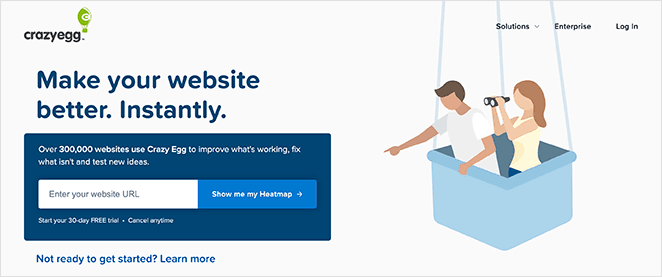
Visitors sign up by filling out a form. After the trial period ends, you can send emails encouraging them to become paying customers.
This funnel is a great fit for software companies or apps that want to show people the value of their product before they commit.
5. Event Funnel
An event funnel is used to promote events like workshops or conferences. It begins with an event landing page where visitors can register and buy tickets.

Plugins like Event Espresso or The Events Calendar make it easy to handle sign-ups and ticket sales. You can send reminder emails to make sure people attend.
This funnel works well for any event where you want to attract participants and manage their registrations.
FAQs on Creating a Sales Funnel in WordPress
Start Building a High Converting Sales Funnel
I hope this guide has helped you learn how to set up a funnel in WordPress that drives leads, conversions, and sales.
You might also find our other guides helpful for growing your business:
- Landing Page vs Sales Page: Which One Is Right for You?
- Top eCommerce Landing Page Examples to Drive Sales
- How to Create a Coupon Code Landing Page to Drive More Sales
- Best CRM Software to Boost Business Sales
Thanks for reading! We’d love to hear your thoughts, so please feel free to leave a comment with any questions and feedback.
You can also follow us on YouTube, X (formerly Twitter), and Facebook for more helpful content to grow your business.

